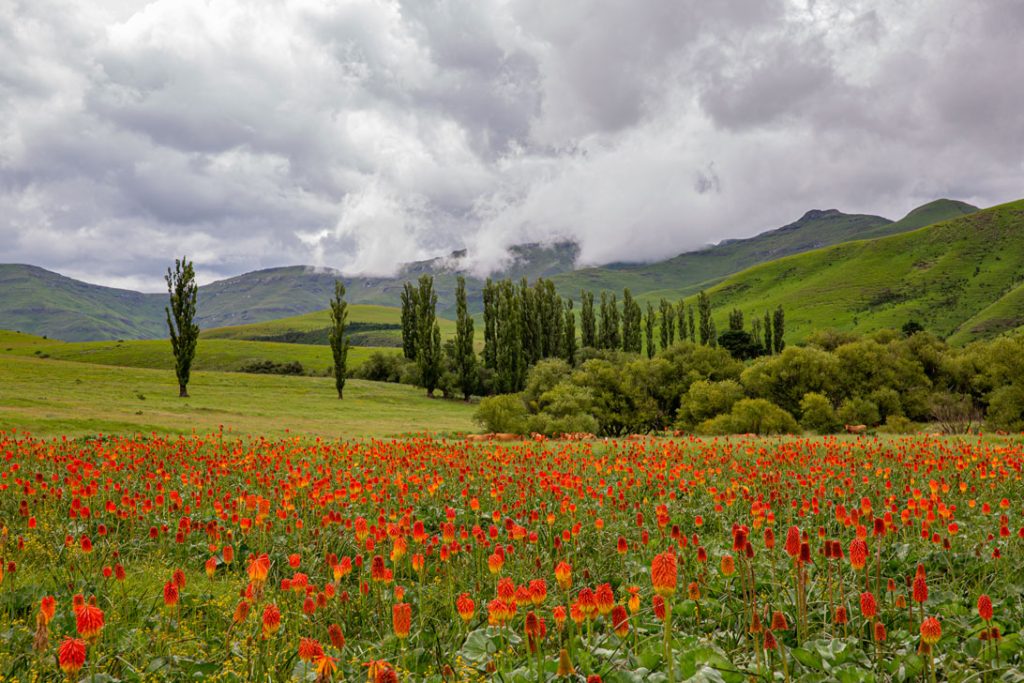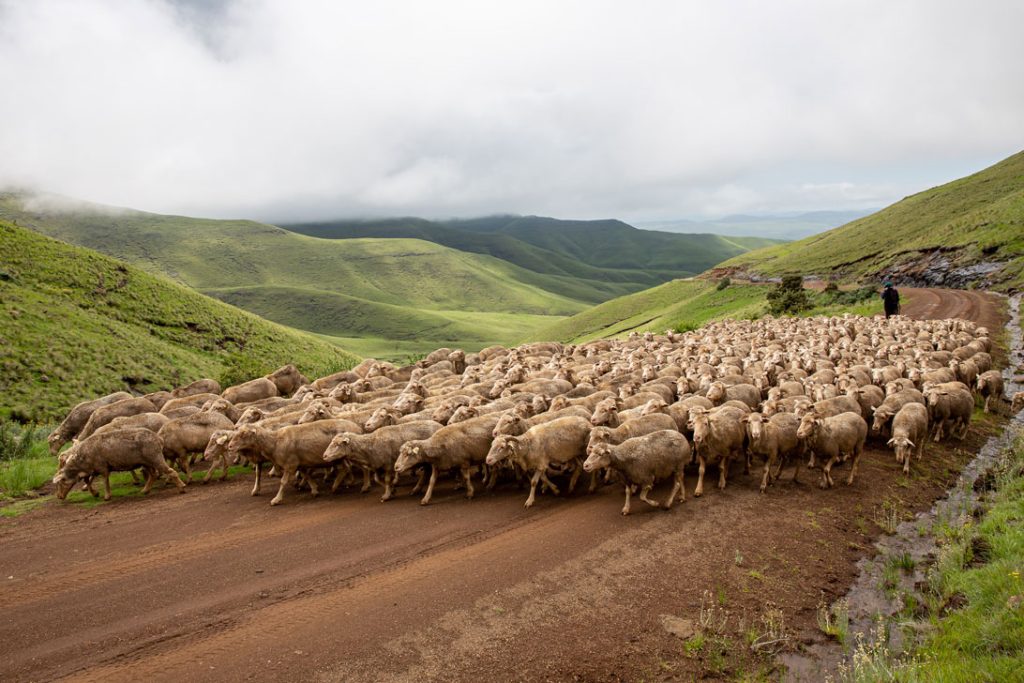Drumsticks? Pepper and Salt? Not just on the table at Tenahead Lodge, but found as flowers up in the surrounding grasslands. The Rhodes Wild Flower Snippet was first issued as a newsbrief by the Rhodes Information Centre in March 2017. This featured not only wild flowers close to Rhodes Village, but also high up on the escarpment, particularly at Tenahead.
Here are those Tenahead wild flowers that may be seen during March.

Delicate pink and white flowers of SATYRIUM LONGICAUDA captured on the Tenahead escarpment plateau at 2600m, where it occurs in striking colonies. The plant is used in traditional medicine and the genus is named after the two-horned Satyr which it resembles.

Detailed view of the charming ZALUZIANSKYA MICROSIPHON or Short-tubed Drumsticks flower. Many specimens of this geometrically intricate flower are found along the Tenahead escarpment at 2600m. The genus is named after the Polish botanist Adan Zalusiansky von Zaluzian (1558–1613). Approximately 13 species of this genus are found in the Drakensberg, of the 55 found in Africa.

The tiny golden yellow flowers of SEBAEA MARLOTHII make a bright impact on the Drakensberg escarpment. It is an endemic mat-forming herb of the eastern mountain region of the Drakensberg belonging to the Gentian family. This striking little flower is named after the botanist HWR Marloth, 1855–1931. Captured on the escarpment at Tenahead.

DISA FRAGRANS. Highly scented orchid found at high altitude up to 3000m. Captured amongst a large drift on the Tenahead escarpment, 2600m.

The patterned LOBELIA FLACCIDA, or Wild Lobelia, found in large colonies on the Tenahead plateau and escarpment at 2600m. The small blue flowers characteristically have two crests in the mouth of its tube and flowers appear from November to June.

WURMBEA ELATIOR, Pepper and Salt Flower. This must be one of the most exquisite flowers of the local high-mountain region, typically found in marshes or streambanks between 1200–3000m. Distinctive for its musky smell and reddish-purple patches in the middle of each tepal. This group was found amongst an unusually large drift on the Tenahead Farm near the Lesotho border at 2650 m.

This vibrantly purple and yellow LOTONONIS GALPINII is widespread along the escarpment at Tenahead. A small ground-hugging shrub belonging to the pea family, forming mats along the steep rocky slopes of the eastern escarpment and is endemic to the region.

A beautiful drift of BERKHEYA PURPUREA captured at the Tenahead reserve. This particular purple Berkheya is endemic to this area and is usually seen in large colonies along the roads and ungrazed fields

White MORAEA ALBICUSPA belonging to the Iris family with its yellow nectar at the base of the large outer sepals, 3cm. The inner tepals end in a characteristically sharp point (hence its Latin species name). Endemic to the Eastern mountain region of the Drakensberg and was recorded on the Tenahead escarpment

Detailed images of the flowers of GLUMICALYX NUTANS with its reflexed lobes that are relatively tiny at 7-8mm at the end of short tubes. The flower is endemic to the eastern Drakensberg mountain region. This specimen captured on the Tenahead escarpment
With thanks to Brendan Cole for photographs and text.



